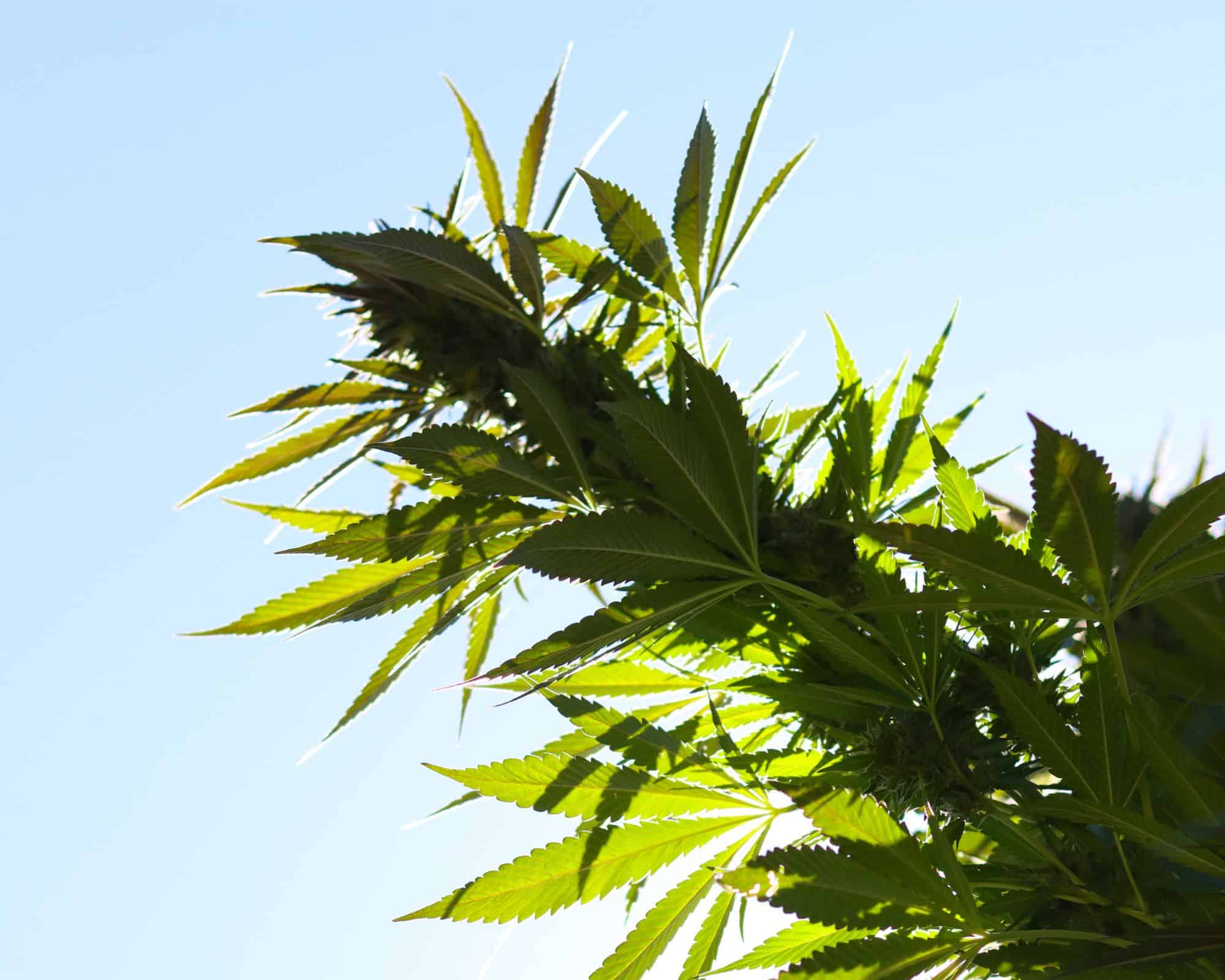What Are Cannabinoids and How Do They Affect Your Cannabis Experience?
The cannabis plant contains more than 60 natural cannabinoids. We’re learning more about these compounds all the time. In fact, scientists only identified the two major ones, cannabidiol (CBD) and tetrahydrocannabinol (THC), in 1963 and 1964 respectively. Likewise, we’re still discovering how cannabinoids interact with the body’s endocannabinoid system. But in recent years, great progress has been made around isolating the effects and outcomes of specific compounds. Here’s what we know about those cannabinoids and their impact on the human body.
What Are Cannabinoids?
Cannabinoids are naturally occurring chemical compounds in the cannabis plant, but they’re by no means exclusive to hemp or cannabis. You’ll also find them in cocoa, black pepper and kava plants, among others.
What Do Cannabinoids Do?
Strictly speaking, the cannabinoid compounds found in plants like cannabis are phytocannabinoids. Their effects come from a process of mimicking the behavior of the endocannabinoids that occur naturally in our bodies. In fact, the cannabinoids in the plant and those we create naturally in our body are remarkably similar. This allows them to interact harmoniously with the body’s nerve receptors and trigger responses that preserve an internal state of balance.
Cannabinoids and terpenes can affect our nervous and immune systems, which in turn impact our mood, sleep, appetite and physical well-being. The specific effect depends on the cannabinoid and terpene profile, working together through the entourage effect to stimulate a variety of responses.
8 Essential Cannabinoids
Although there are more than 60 cannabinoids in cannabis, some are found in trace quantities only. For that reason, we typically focus on eight key cannabinoids.
1. Tetrahydrocannabinol (THC)
THC is the most commonly known psychoactive cannabinoid that is responsible for getting you high. THC produces a sense of euphoria, relaxation and spatial awareness and it is also effective at:
- Reducing pain
- Supporting better sleep
- Stimulating appetite
- Improving mood
2. Cannabidiol (CBD)
CBD is the primary non-psychoactive compound found in cannabis. It can provide many therapeutic benefits without any psychoactive effects, such as:
- Reducing aches and pains
- Managing stress and anxiety
- Reducing nausea
- Managing inflammation
3. Tetrahydrocannabinolic Acid (THCA)
Raw cannabis plants contain high levels of THCA, a non-psychoactive precursor to the psychoactive THC. When you consume raw cannabis, you are consuming THCA. As the cannabis is cured, THCA changes its state and loses its acid to become THC.
THCA alone can function as a neuroprotectant and be effective at:
- Reducing aches and pains
- Reducing inflammation
4. Cannabidiolic Acid (CBDA)
Similar to THCA, CBDA is the raw precursor form of CBD found in uncured flower. However, unlike THC, this cannabinoid starts as a non-psychoactive compound and stays that way even after heating or curing.
CBDA delivers a variety of health benefits, including:
- Reducing inflammation
- Reducing nausea
5. Cannabinol (CBN)
When THC oxidizes, it breaks down into CBN. Since it is a product of THC, cannabinol (CBN) is mildly psychoactive, although it is most commonly used for its potential sedative properties.
Heating and drying cannabis allows the plant’s volatile chemical compounds above to oxidize into CBN, at which point their full benefits and effects become apparent. CBN alone is potentially beneficial for:
- Supporting restful sleep
- Relieving pain
6. Tetrahydrocannabivarin (THCV)
A psychoactive and energetic version of THC, this lesser-known cannabinoid delivers a powerful but shorter-duration high compared to THC that’s often described as stimulating and uplifting.
Most cannabis strains contain very little THCV, and it is more prevalent in African varieties. Cannabis containing THCV is known for:
- Suppressing appetite
- Boosting energy
7. Cannabichromene (CBC)
The non-psychoactive cannabinoid you probably haven’t heard of is CBC. This cannabinoid plays a potentially important role in the entourage effect, working together with CBD and THC to trigger responses in the body’s nervous and immune systems for:
8. Cannabigerol (CBG)
CBG is considered a less common cannabinoid, but small amounts of the compound are present in most cannabis strains. Today cannabis breeders are experimenting with new strains to maximize the quantity of this valuable compound. Research has suggested that CBG can be used to treat a variety of ailments including, potentially:
- Glaucoma
- Inflammatory bowel disease (IBS)
9. Delta-8
Delta-8 tetrahydrocannabinol, or delta-8 for short, is another form of THC, the primary psychoactive compound found in cannabis. Delta-8 offers effects similar to those of THC, though the effects of delta-8 are generally less potent. Its potential effects include:
- Euphoria
- Improving mood
- Stimulating appetite
- Reducing nausea
Understanding Cannabinoids
With a clearer understanding of the various cannabinoids and their unique effects, cannabis users can choose to consume cannabis in the way that offers the best outcomes for their specific needs. At Solful, we believe in transparent labeling. Alongside the terpene profile, you’ll see THC and CBD levels listed for each strain of cannabis in our store, as well as any of the other key cannabinoids discussed above. That will give you a clearer idea of which benefits to target and what effects to expect. Find what’s right for you today!
Sources:
Abioye, Amos, et al. “Δ9-Tetrahydrocannabivarin (THCV): A Commentary on Potential Therapeutic Benefit for the Management of Obesity and Diabetes.” Journal of Cannabis Research, vol. 2, no. 1, Jan. 2020, p. 6. PubMed, https://doi.org/10.1186/s42238-020-0016-7.
Atakan, Zerrin. “Cannabis, a Complex Plant: Different Compounds and Different Effects on Individuals.” Therapeutic Advances in Psychopharmacology, vol. 2, no. 6, Dec. 2012, pp. 241–54. PubMed Central, https://doi.org/10.1177/2045125312457586.
Cannabinoids – Alcohol and Drug Foundation. https://adf.org.au/drug-facts/cannabinoids/. Accessed 4 Feb. 2022.
DeLong, Gerald T., et al. “Pharmacological Evaluation of the Natural Constituent of Cannabis Sativa, Cannabichromene and Its Modulation by Δ9-Tetrahydrocannabinol.” Drug and Alcohol Dependence, vol. 112, no. 1–2, Nov. 2010, pp. 126–33. PubMed Central, https://doi.org/10.1016/j.drugalcdep.2010.05.019.
El-Alfy, Abir T., et al. “Antidepressant-like Effect of Δ9-Tetrahydrocannabinol and Other Cannabinoids Isolated from Cannabis Sativa L.” Pharmacology, Biochemistry, and Behavior, vol. 95, no. 4, June 2010, pp. 434–42. PubMed Central, https://doi.org/10.1016/j.pbb.2010.03.004.
Formato, Marialuisa, et al. “(‒)-Cannabidiolic Acid, a Still Overlooked Bioactive Compound: An Introductory Review and Preliminary Research.” Molecules, vol. 25, no. 11, June 2020, p. 2638. PubMed Central, https://doi.org/10.3390/molecules25112638.
Izzo, Angelo A., et al. “Inhibitory Effect of Cannabichromene, a Major Non-Psychotropic Cannabinoid Extracted from Cannabis Sativa, on Inflammation-Induced Hypermotility in Mice.” British Journal of Pharmacology, vol. 166, no. 4, June 2012, pp. 1444–60. PubMed Central, https://doi.org/10.1111/j.1476-5381.2012.01879.x.
Kruger, Jessica S., and Daniel J. Kruger. “Delta-8-THC: Delta-9-THC’s Nicer Younger Sibling?” Journal of Cannabis Research, vol. 4, no. 1, Jan. 2022, p. 4. BioMed Central, https://doi.org/10.1186/s42238-021-00115-8.
Nachnani, Rahul, et al. “The Pharmacological Case for Cannabigerol.” Journal of Pharmacology and Experimental Therapeutics, vol. 376, no. 2, Feb. 2021, pp. 204–12. jpet.aspetjournals.org, https://doi.org/10.1124/jpet.120.000340.
Wong, Hayes, and Brian E. Cairns. “Cannabidiol, Cannabinol and Their Combinations Act as Peripheral Analgesics in a Rat Model of Myofascial Pain.” Archives of Oral Biology, vol. 104, Aug. 2019, pp. 33–39. PubMed, https://doi.org/10.1016/j.archoralbio.2019.05.028.

